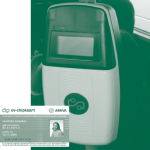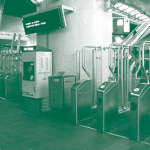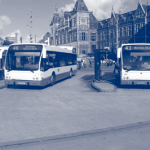In 2003 the Netherlands decided to switch
to single E-Ticketing for all types of public
transport, for train, tram, bus and underground,
both in the cities and regionally.
To be sure “proven technology” was used,
at that time the choice fell on an already
working system from Hong Kong. Via a
tender procedure a consortium was
selected that was put in charge of the
development of the E-ticketing system in
the Netherlands.
The principle of the chosen system works as
follows: the passenger is checked in and out
at the start and end of each trip by keeping
his smartcard close to the card reader.
The trip cost, based on kilometres travelled,
is deducted from the balance on the card
on checking out. The passenger has to
check in and out each time he switches
vehicles. These check-in and check-out
transactions are processed in a central
system, which also takes care of settlement
between the carriers. Instead of travelling
with a balance on the card it is also possible
to put “travel products” on the E-ticket,
which give certain travel privileges, and
which are, therefore, recognised at the
check-in and check-out phase.
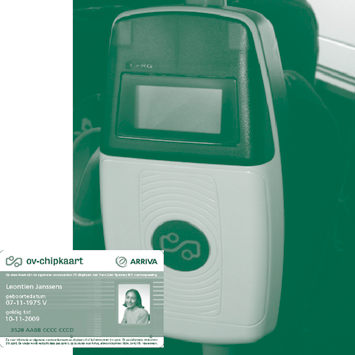
At the time, five of the nine carriers set up
a specialised organisation, Trans Link
Systems, for the technical implementation
of the project. Among other things this
company ensures all carriers implement the
E-ticketing system according to the same
specifications.
In the Netherlands the public transport
carriers run so-called concessions. These are
areas where the right to offer transport
services during a number of years against a
certain compensation from the regional
government has to be acquired by means
of a tender procedure. The carriers are
tasked with the responsibility to
implement the E-ticketing system in the
areas where they offer transportation; the
cost of this implementation is borne by the regional governments: 12 provinces and 7
city regions.
The implementation of E-ticketing in the
Netherlands is wholly regionalised to the 19
regional governments. Strictly speaking the
ministry of Transport is only involved in the
implementation of E-ticketing for the
National Railways (NS), and in giving
permission to abolish the current paper
tickets. It also grants subsidies to the
regional governments with which they can
pay for the implementation of E-ticketing.
The agreements on the implementation of
E-ticketing are settled in contracts between
the regional governments and the carriers.
The E-ticket is gradually being implemented
in the Netherlands. The conglomerates
Rotterdam and Amsterdam together
with their surrounding regions are first.
In Rotterdam the underground is only
accessible for E-ticket holders since the
beginning of 2009, in Amsterdam this will
happen within half a year. In the rest
of the Netherlands the E-ticket will be
introduced during 2009 and 2010 and the
paper tickets will be discarded.
In the
same period a network of charging
locations will also be realised in shops
spread over the whole country, in the
vehicles, and at the stations and stops.
9 million travellers will also have to be
supplied with E-tickets in the same period;
a daunting operation.
Sadly enough the implementation of
E-ticketing in the Netherlands has run up a
delay. A number of causes can be seen to
be at the root of this, which, at the same
time, are lessons to be learned for other
countries and regions with plans in this
direction. Consideration has to be given,
however, to the fact that the way in which
a new E-ticketing system is implemented in
the Netherlands is unique in the world: all
carriers take part, and at the end of the
project every Dutchman can travel throughout
the country using every means of
public transport with a single smartcard:
the E-ticket.
The reason for this national approach – in a
small country like the Netherlands– was to
avoid contraining the travellers to travel
with several different systems and smartcards.
Even if this approach results in the
need for a synchronisation between a large
number of parties. As a result a number of
problems arose however, which could mostly
have been avoided if the success factors
had been better mapped out in advance
and during the implementation phase.
Success factor 1 : see to the existence
of strict coordination of the whole
exercise from one central point
Many parties are involved in the E-ticketing
project, all with valid reason:
- The ministry of Transport: financer of
the project, - Provinces and city regions: draw up
contracts with the carriers about the
implementation of E-ticketing, - Carriers and their branch associations:
have to implement the E-ticket which
is not their core business, - Consumer organisations: criticize the
consequences of the E-ticket for the
traveller, - The travellers: are confronted with a
new way of paying for their journey, - Trans Link Systems (TLS): is charged
with specifying the system, including
the clearance of revenues and issuing
E-cards, - Suppliers of E-ticket equipment: have
to adhere to the specifications and
need to be certified, - De Nederlandse Bank (the Dutch
National Bank): needs to authorise TLS
to manage the “float” of outstanding
balances as a banking institution, - The Dutch Data Protection Authority
(College Bescherming Persoonsgegevens):
monitors the amount of security for
the personal data in the E-ticket system, - Universities and technical institutions:
test the protection of the electronic
security of the E-ticket system against
cracking the E-ticket code, - The media: are naturally interested in
everything that can go wrong in such
a national system.
It is important that there is a director to
the project clearly identified, who ensures
that all parties agree on matters such
as technology, planning, tariffs and
distribution. If that doesn’t happen then
a chaos of joint decision making, new
ideas and self-interest will result. Leadership
is necessary to cut the knot if parties
disagree.
Success factor 2: make sure that you
tell a success story right from the start
The E-ticket acquired a negative image
as a result of problems with the gates, the
negative coverage by media and the consumer
organisations, and the suspicion of
the traveller organisations that the E-ticket
will be misused to covertly increase the
prices and that private information will be
misused. If clear agreements have not
been made carriers tend to demonstrate
risk evasive behaviour because of the risks.
They prefer to pass onto the government
extra costs as much as possible and they do
not sufficiently look for possibilities and
opportunities.
Therefore it is necessary to ensure that
people do not immediately think of problems
in relation to the E-ticket, but recognise
the positive effects of such a useful system.
Example of a success story in the Netherlands
is the recent implementation in Rotterdam,
where fare dodging, for example, has been
considerably reduced. This has also been
well managed and communicated: finally a
success story that made all the papers.
Amsterdam too came in the news positively:
elderly people (65 plus) are buying the
E-ticket in large numbers now (over 40.000)
in exchange for 3 months of free ridership
in Amsterdam.
Success factor 3: keep it all simple for
the customer (“KISS”)
The E-ticket in Nederland is complicate for
the customer. He is confronted with a
number of questions, for example: why
can’t you load the E-ticket at a bank, why
do we need so many new machines, why
do they all look different? Why do you
sometimes have to go through a gate at the
railway station but not always? Why do I
have to check-in and out each time with
every new carrier? Why do I encounter different
kilometre tariffs on the way? Why do
I need to check out if I have a season ticket?
Why isn’t the current zoning system copied
to the E-ticket system on a 1-1 basis?
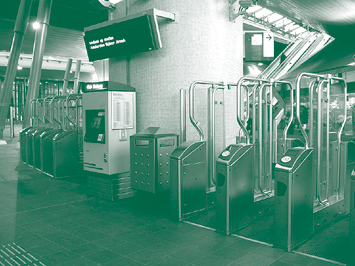
Reason for these sometimes complex
constructions, lies in the fact that the 19
regional governments have the right, as
public transport authorities, to their own
tariff wishes.
Restraint in inventing proprietary tariffs
and products is necessary, however. Keep
it simple, even in the own region. It is
preferable to travel on the card balance as
much as possible, with or without reductions,
based on a kilometre tariff, but no more
zones, and with as little products and
exceptions as possible. Also ensure effective
communication of the milestones achieved,
in which everything is extensively explained.
Success factor 4: really buy a system
that works already, and that can actually be copied
The Netherlands bought the system that is
being used in Hong Kong. It had to be rebuilt,
however, according to very complicated
and continuously changing specifications.
Later on other suppliers were also allowed
to join in, provided they could match their
systems with the system bought. Very good
in terms of competitiveness, however, it
did result in a doubling of the technical
problems.
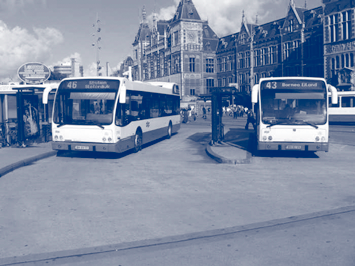
The setup of the technical system can also
be simpler: the multi-staged architecture, in
which the carriers manage their own backoffice,
linked to a central system, should be
discouraged. One central back-office in
which all information is safely processed is
to be preferred, even more so now that
it has turned out that carriers are not
allowed to use the individual travel data for
commercial ends, because of the law on
privacy.
Success factor 5: take a joint project
approach
The 9 public transport carriers and their 19
ordering customers (regional Public Transport
Authorities) together determine a number of
issues for the more than 60 regions
(concession areas) in which travellers are
being transported, such as the tariffs, the
travel products, the communication campaigns
and the recharging locations.
Of
course there are separate teams in which
this information is exchanged. And countrywide
agreements were also made between
these parties about these subjects. But it
would have been better if there had been
one national organisation that had taken in charge all these aspects in a professional
manner, and not just the technology, as
Trans Link Systems did.
Also empowering such an organisation
with sufficient authority to enforce a number
of matters, that are particularly important
to the traveller, such as the appearance of
the equipment, the recharging services to
be set up and finally a simple tariff structure,
is important.
Conclusion
A number of years have passed and the
E-ticket system is eventually being implemented
nation-wide in the Netherlands in
2009 throughout to 2010. After getting
used to it the travellers will be able to use
it comfortably as is proved by the pilots
projects in Rotterdam and Amsterdam.
However a number of problems could
have been prevented, if more thought had
been given to what makes such a project a
success for the traveller. Because in the
end it all revolves around the traveller …
